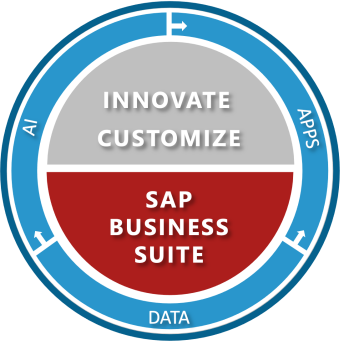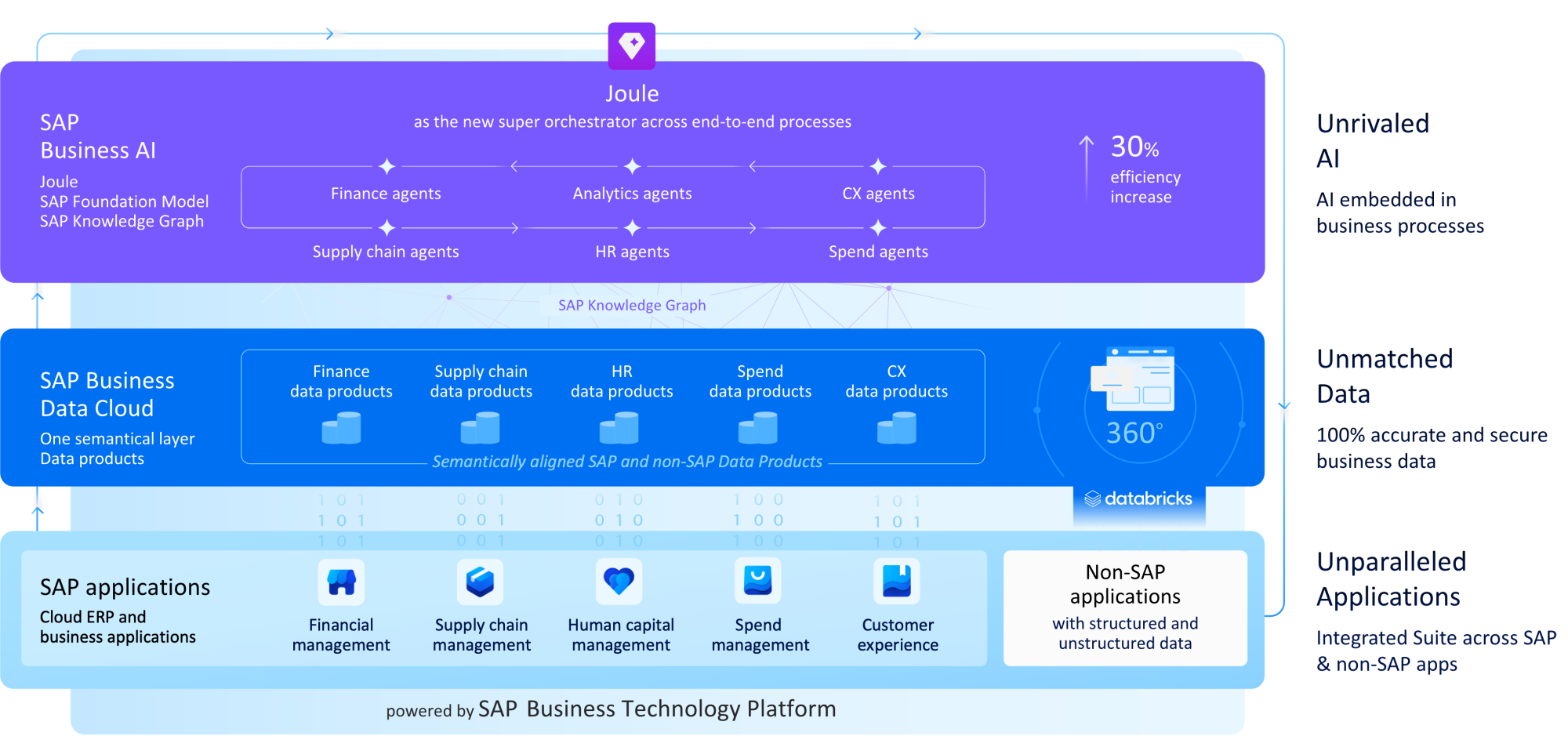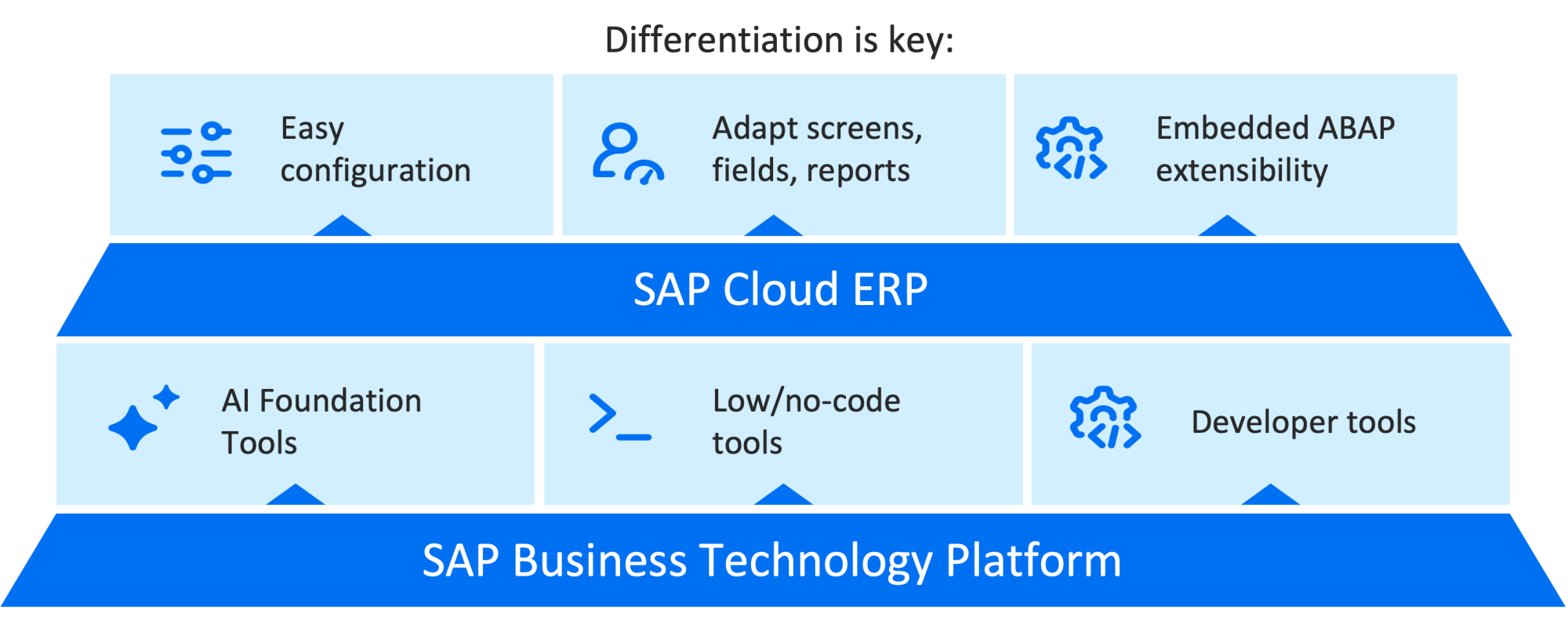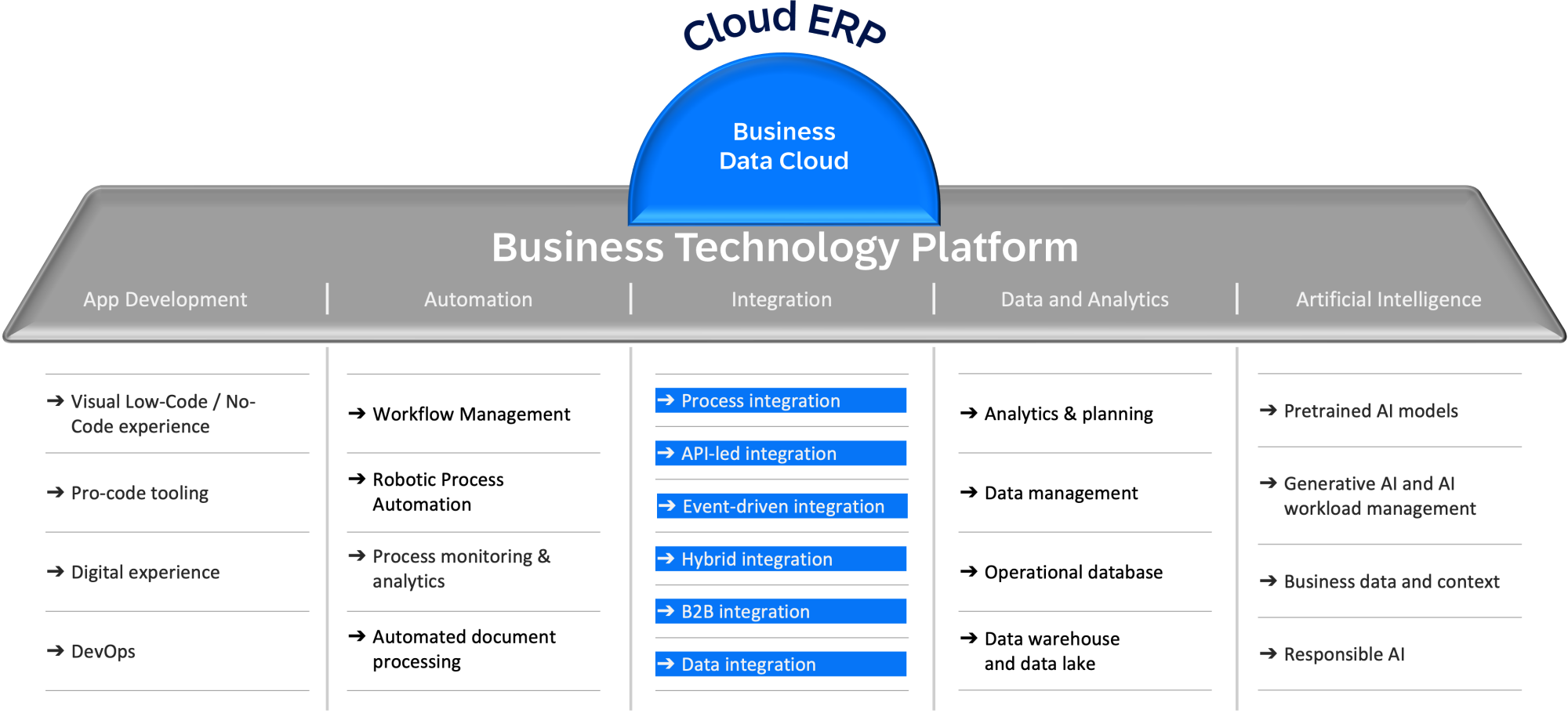Innovation does not happen by itself. Companies need a foundation that brings together data, applications, and artificial intelligence. The SAP Business Technology Platform (BTP) fulfills this role and serves as the engine behind the SAP Business Suite.
SAP BTP as the foundation for integration, flexibility, and insights
Organizations want to connect processes faster, both within SAP and with external systems. With more than 700 open APIs and thousands of ready-made integrations, SAP BTP ensures a smooth connection between both SAP and non-SAP applications. This setup reduces complexity and accelerates digital transformation. In addition, low-code and no-code tools enable companies to easily develop new apps or expand existing processes without losing the stability of the clean core.
The connection with SAP Business Data Cloud
The power of SAP BTP is fully realized in collaboration with SAP Business Data Cloud. While the Data Cloud provides a single semantic layer of reliable and consistent data, SAP BTP makes this data immediately usable through integration and embedded AI capabilities. Finance, supply chain, HR, and customer processes benefit from consistent and up-to-date information that is available to everyone in the organization.
AI as an innovation driver for your business
Data only becomes valuable when it is converted into action. That is why SAP Business AI is built into the processes, with SAP Joule as a digital co-pilot. AI agents support employees with predictions, recommendations, and analyses that are relevant to their daily work. This makes innovation tangible and accelerates decision-making at all levels – from the shop floor to the boardroom.
A platform for continuous innovation
SAP BTP ensures that organizations have continuous access to the latest technologies, such as process automation, machine learning, and event-driven integrations. This keeps the organization flexible, scalable, and ready for future challenges.
Where ERP streamlines core processes, SAP Business Technology Platform makes the difference in innovation. Through close collaboration with the SAP Business Data Cloud and the integration of AI, BTP connects data and apps in a single environment. This enables companies to innovate faster, reduce risks, and better execute their strategy. SAP BTP is therefore not only a technical foundation, but a real growth accelerator.





